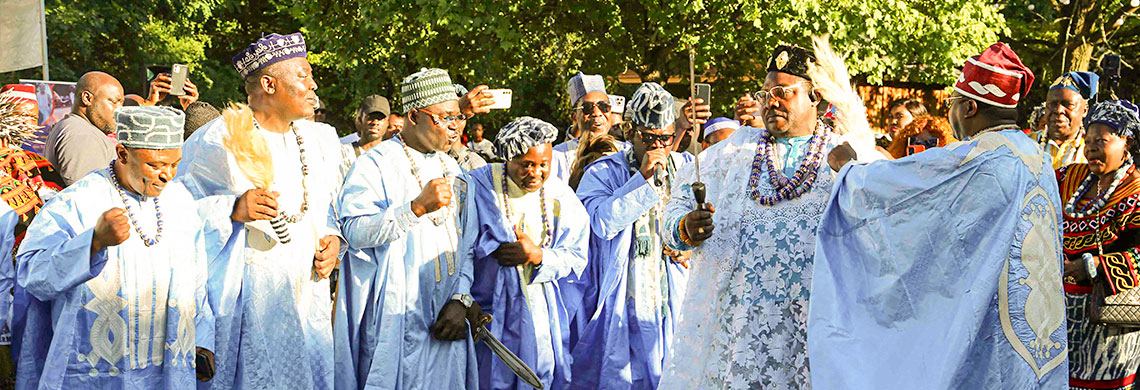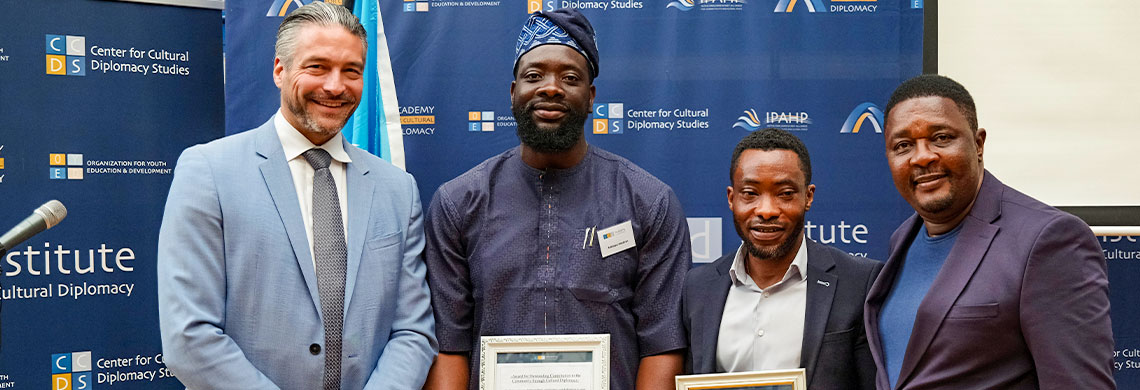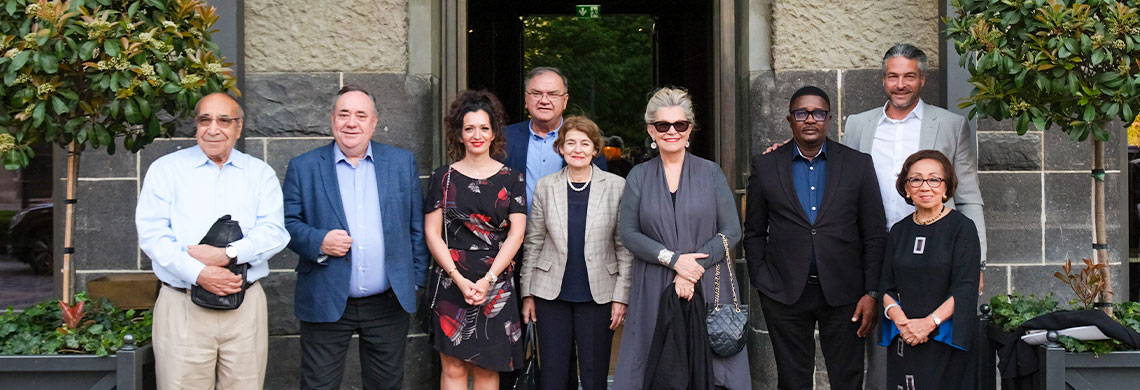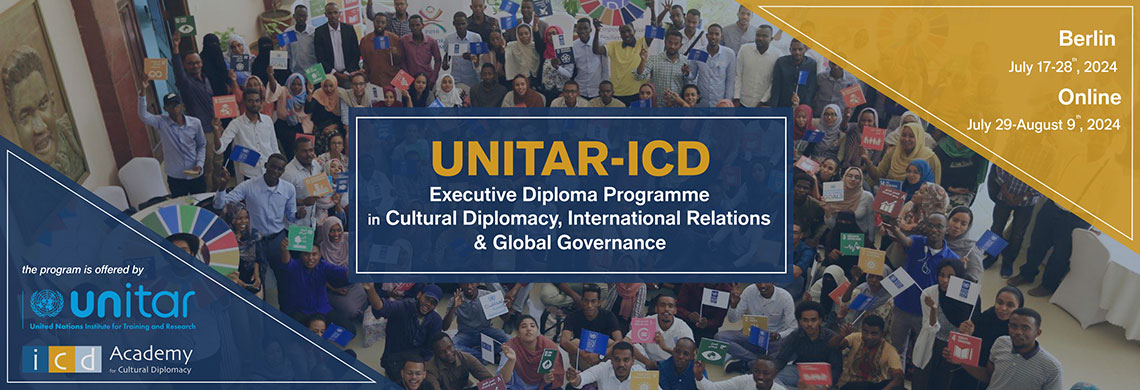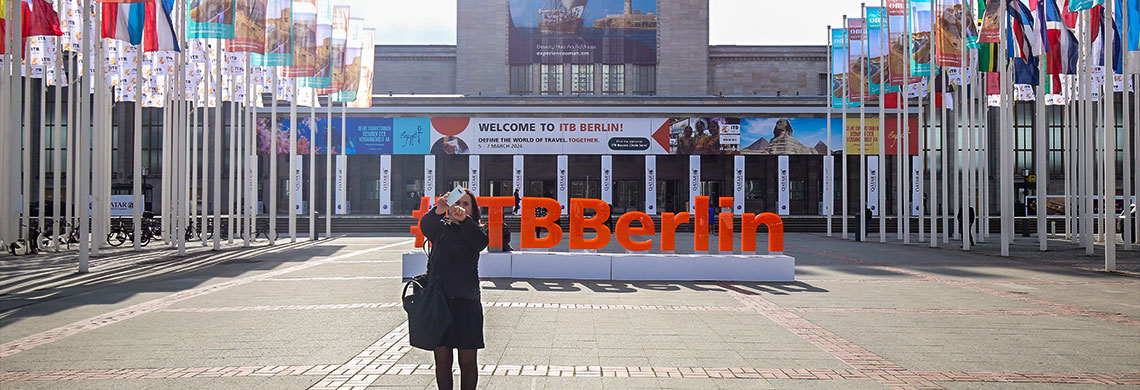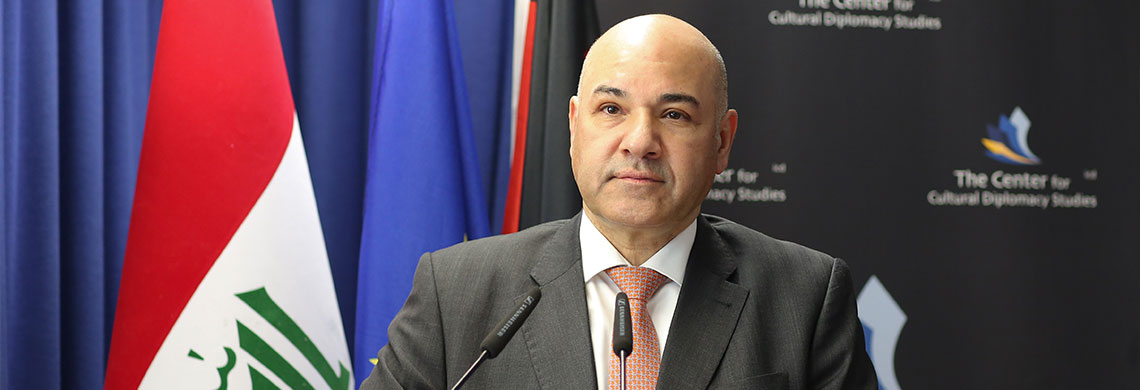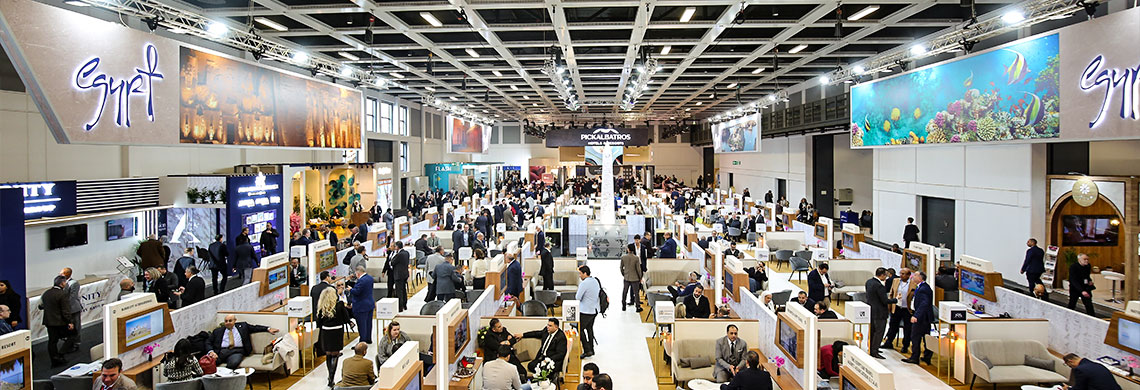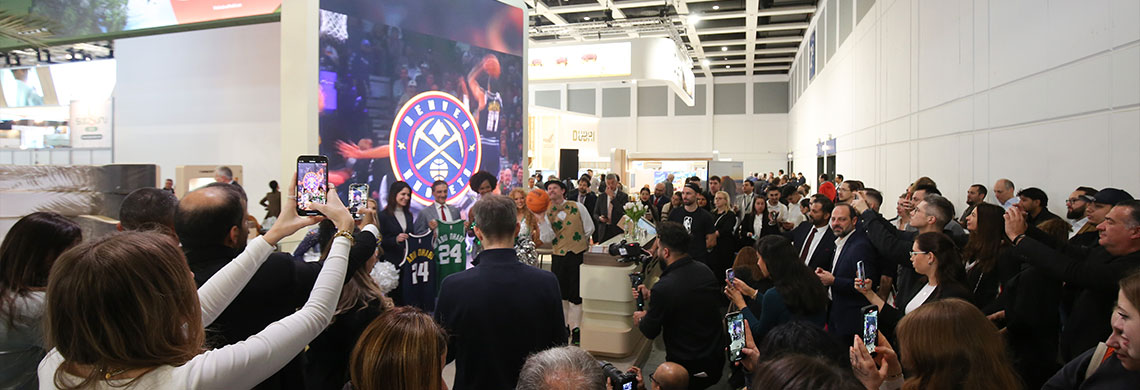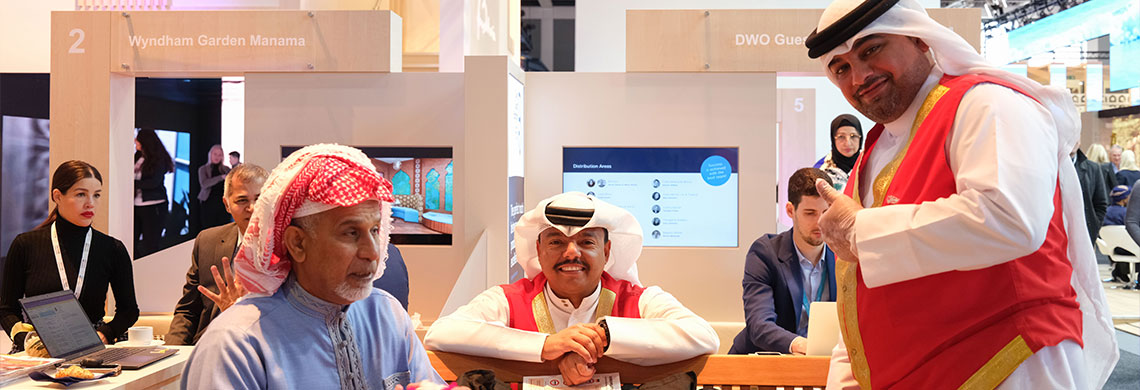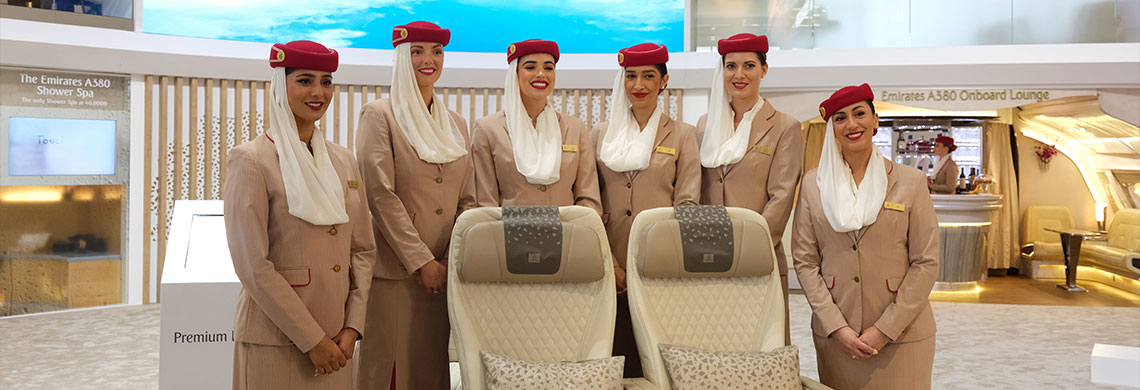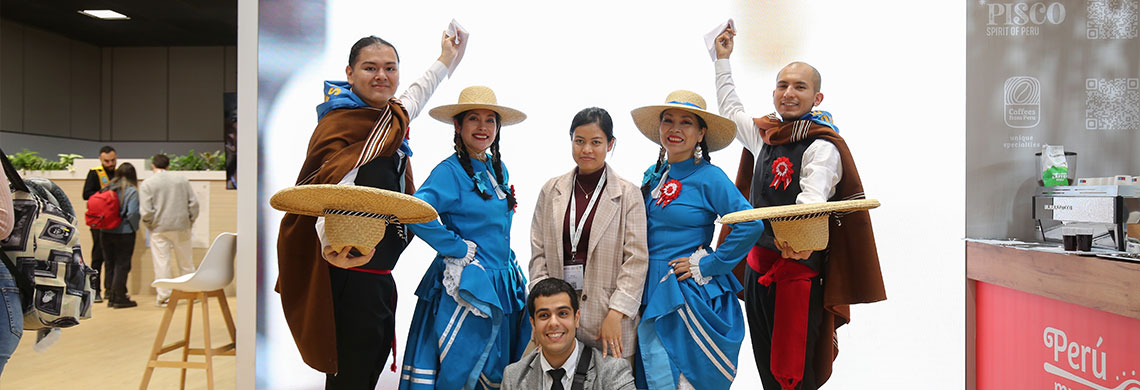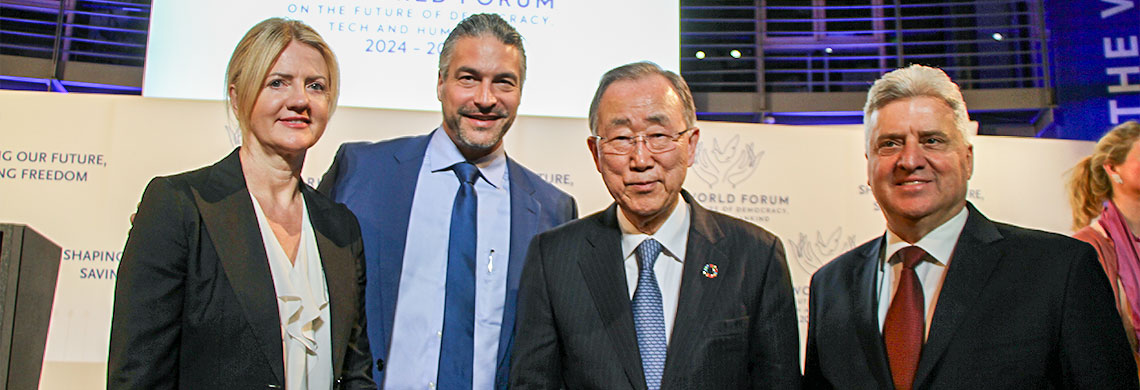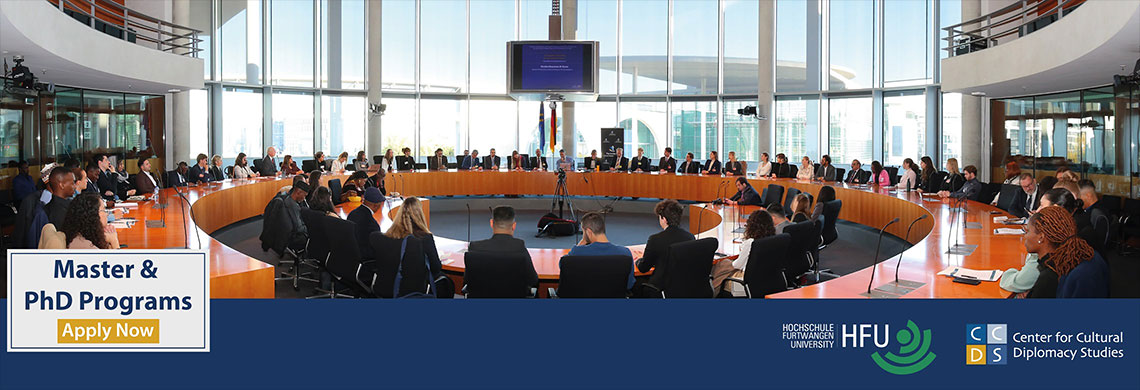Young Leaders´ Forums
Scandinavia Meets Germany

Report of Day 1: Introductions
Day one of the ICD’s first Scandinavia Meets Germany Forum for Young Leaders began with a welcome and introduction by Mark Donfried, Director and Founder of the ICD, in the Amerika Haus Berlin, the USA’s former base for public diplomacy in Berlin. Mark Donfried outlined the themes of the week while the participants got to know each other, introducing their academic backgrounds and professional experience. The group was a diverse mix with all the Scandinavian countries and Germany represented, as well as some participants from the UK and North America.After lunch the group ventured out into the city to see the Carnival of Cultures, Berlin’s annual parade of floats with performers from nearly every group of Berlin’s diverse make-up. It was a crowded, colourful day, and the group had the rest of the afternoon free to explore the rest of the city.
Report of Day 2: Business and the History of Cultural Diplomacy
Monday began with a seminar in the Amerika Haus, held by Ralf Fröhlich, Director of Himmel och Jord on the subject of business behaviour in Scandinavia and Germany. Himmel och Jord is an agency for advertisement and communication based in Berlin and Stockholm. He compared the similarities and differences in business culture and entrepreneurship between the Germany and the Scandinavian region, and discussed the way Germans and Swedes see this sector with relation to nation- branding.In the afternoon Mark Donfried introduced the history and development of the field of Cultural Diplomacy in a short lecture for the participants. He traced the history of the use of cultural diplomacy up to the great national CD institutions and highlighted the growing interest in and recognition of the field in recent years. This was followed by another seminar in the afternoon on leadership and communication, which involved a role play on the area of cultural diplomacy.
In the evening, the group gathered again at the En Passant Restaurant for a welcome group dinner. The restaurant is situated in Savigny Platz in the heart of West Berlin’s bar scene.
Report of Day 3: Development, Education and Culture
Tuesday began with the participants travelling to Berlin’s Marzahn-Hellersdorf district to meet Per Trassdahl, director of the Stadtteil Bewegt (City Movement) Project. Marzahn-Hellersdorf , in the east of the city, is one the most marginalised areas of Berlin, with a declining economy and rising problems of social breakdown. The City Movement project is a new social system-concept to be launched in disadvantaged city boroughs, starting in Berlin’s Marzahn-Hellersdorf borough. Its goal is to inspire target groups out of reach of the local welfare organizations to form sustainable self-organized activities, where possible collaborating with the local organizations. The participants were given the task of finding shops, businesses and private people that were willing to give so-called ‘flash jobs’ to young mothers from the district.The group then travelled back to the Amerika Haus to hear a lecture by University of Tübingen Professor Dr. Stephanie Gropper entitled ‘The Challenges and Opportunities in Higher Education’. She gave an enlightening insight into the difference between the popularity of Scandinavian universities with German students and vice versa in light of the Bologna Process agreements. She made the argument that the German system could benefit from the Scandinavian model in a number of ways, most importantly in the ‘service concept’ within Scandinavian colleges, whereby the universities actively integrate their students into college life, and by the more widespread use of English as a teaching medium.
The professor’s talk was followed by a lecture from Judith Herrmann of the German Commission for UNESCO. She introduced the work of UNESCO and the role of the program in fostering intercultural communication and cooperation. Early on she made the point that UNESCO is the main actor in the field of international cultural diplomacy, and then proceeded to explain the practical challenges involved in UNESCO’s work, especially those of funding and issues surrounding national sovereignty.
In the evening, Prof. Dr. Sophie Wennerschied, Director of the Kulturhaus Berlin, introduced the work of the Kulturhaus. Her introduction was followed by a discussion among the participants on the role of art as a form of cultural diplomacy and its potential for bridging divides between people of different backgrounds.
Report of Day 4: International Relations
The group visited the German Foreign Ministry on the morning of the 3rd and listened to a lecture by Alexander Somoza, government representative of the Nordic region. He briefly outlined the history of the German relationship with the Nordic countries and then explained the way in which his department was set up in recognition of the contemporary situation, before highlighting some of the main areas of relations that his department and the Scandinavian countries need to work hardest on together in the future.At 12.00 the participants arrived at the Nordic Embassies building on Klingelhofferstrasse for lunch and a lecture on multilateral cultural diplomacy. Counselor Frode Solberg of the Norwegian Embassy gave a talk which first highlighted the unprecedented cooperation between the Scandinavian nations leading to the construction of the unique building which today houses the embassies of Iceland, Norway, Sweden, Finland, and Denmark. She went on to demonstrate the flourishing relations between Norway and Germany and the embassy’s key role in furthering general knowledge about Norway in Germany.
In the late afternoon Elin Lindberg of the Junior German-Swedish Chamber of Commerce, gave the participants another lecture on the history and current role of her institution. She detailed the breadth of their organisation (representing 550 Swedish companies and individuals), their focuses and target groups, and also mentioned the co-operation they have with partner organisations like the Schweden Centre. In the early evening the participants had some free time to do a little sightseeing before the excitement of the International Boat Party at nine o’clock. The Eastern Comfort is moored on the Spree behind the largest remaining part of the Berlin wall, and is a regular hub of Berlin’s cosmopolitan crowd.
Report of Day 5: Identities and Partnerships
The Young Leaders began Thursday with a traditonal Scandinavian brunch of traditional Nordic dishes, laid on by the SMG team at the Amerika Haus. While eating they were shown a presentation on the future of Iceland and Norway with regards to the European Union.Mid-morning there was an evaluation of the previous interactive workshop the Stadtteil Bewegt (City Movement Project) with Per Traasdahl.
After lunch there was a conference at the impressively modern Friedrich-Ebert Stiftung entitled ‘Providing Leadership in Turbulent Times? A Preview of the Swedish 2009 EU Presidency’. The speakers included Ruth Jacoby, Director-General for Development Cooperation at the Swedish Ministry for Foreign Affairs, Uwe Optenhögel, director for the newly opened Friedrich Ebert Stiftung Nordic office in Stockholm, Friedrick Langdal, Representative of the Swedish Institute for European Policy Studies, and Göran von Sydow, Representative of the Swedish Institute for European Policy Studies. The discussion ranged over the issues surrounding the Swedish EU presidency, the December climate change discussions in Copenhagen, questions of common security policy in the Baltic, EU integration, and of course the effects of the financial crisis among other matters.
At 4 pm, Ambassador Karl-Erik Norman, Director of the Europa Kulturparlament, came to the Amerika Haus to give a speech about Scandinavian identity and culture in the context of the European Union. He analysed the history of the Scandinavian identity as a whole and its relation vis-à-vis Europe, as well as each nation’s own journey of national identity. He traced the gradual shift from the once heavy influence of the NATO alliance towards a more Europe-centred approach to issues of defence and foreign policy, for which the group were very appreciative.
In the evening, the group visited the Kunsthaus Tacheles, in the heart of Berlin’s Urban Art Scene. Here they viewed the exhibitions, and made a trip to the top floor bar. Prof. Wennerscheid outlined the work of the Kunsthaus and the motivation behind it. The initiative was set up as a non-profit organisation in 2003 in order to bring contemporary Scandinavian culture to Germany.
Day 6: Finish Institute, Farewells and the Future
The last day of the seminar began with a visit to the Finnish Institute in Germany Finnland-Institut in Deutschland. Moderator Marjaliisa Hentilä led a seminar on the Institute’s work in the field of cultural diplomacy, outlining its mission in the fields of art and culture, science and research, technology and economics. The Germany Finnish Institute is responsible for making all these aspects of Finland accessible to German-speaking Europe.Back at the Amerika Haus, the lunch-break was followed by a workshop on leadership initatives led by Mark Donfried, where participants had the opportunity to develop and present their ideas for their leadership initiatives. Several individuals detailed ideas for projects focusing on very varied themes, from Third Culture Kids forums, to Movie Festivals in Berlin for amateur movie makers.
During the next workshop on the future of SMG, participants considered what should be the next steps for the SMG forum. Notably, there were suggestions from inside the group for the forum to have a base in Scandinavia as well as in Berlin in the future.
In the evening there was a farewell celebration for the participants who had gelled very well together during the week and promise to comprise a very dynamic group of young leaders, dedicated to furthering the Scandinavia-Germany relationship.








